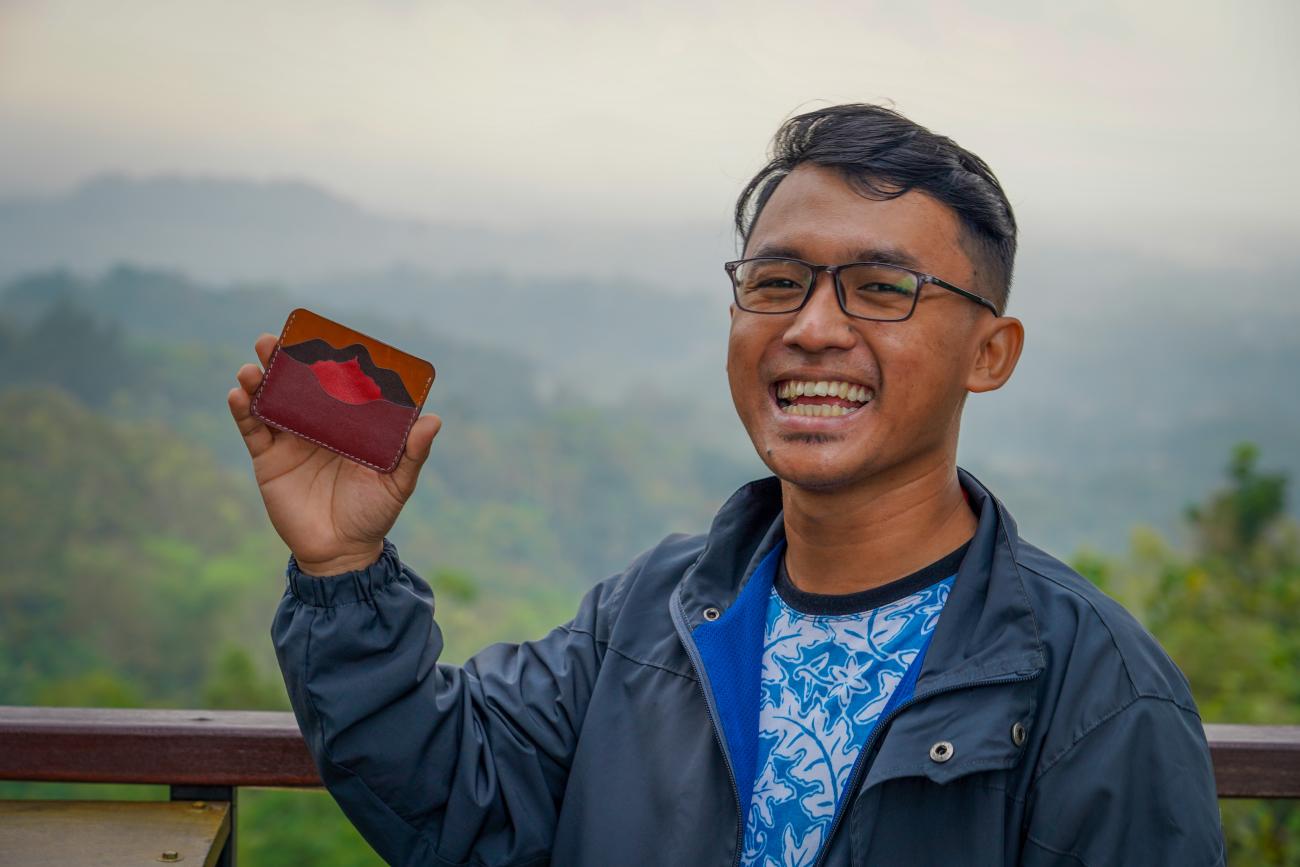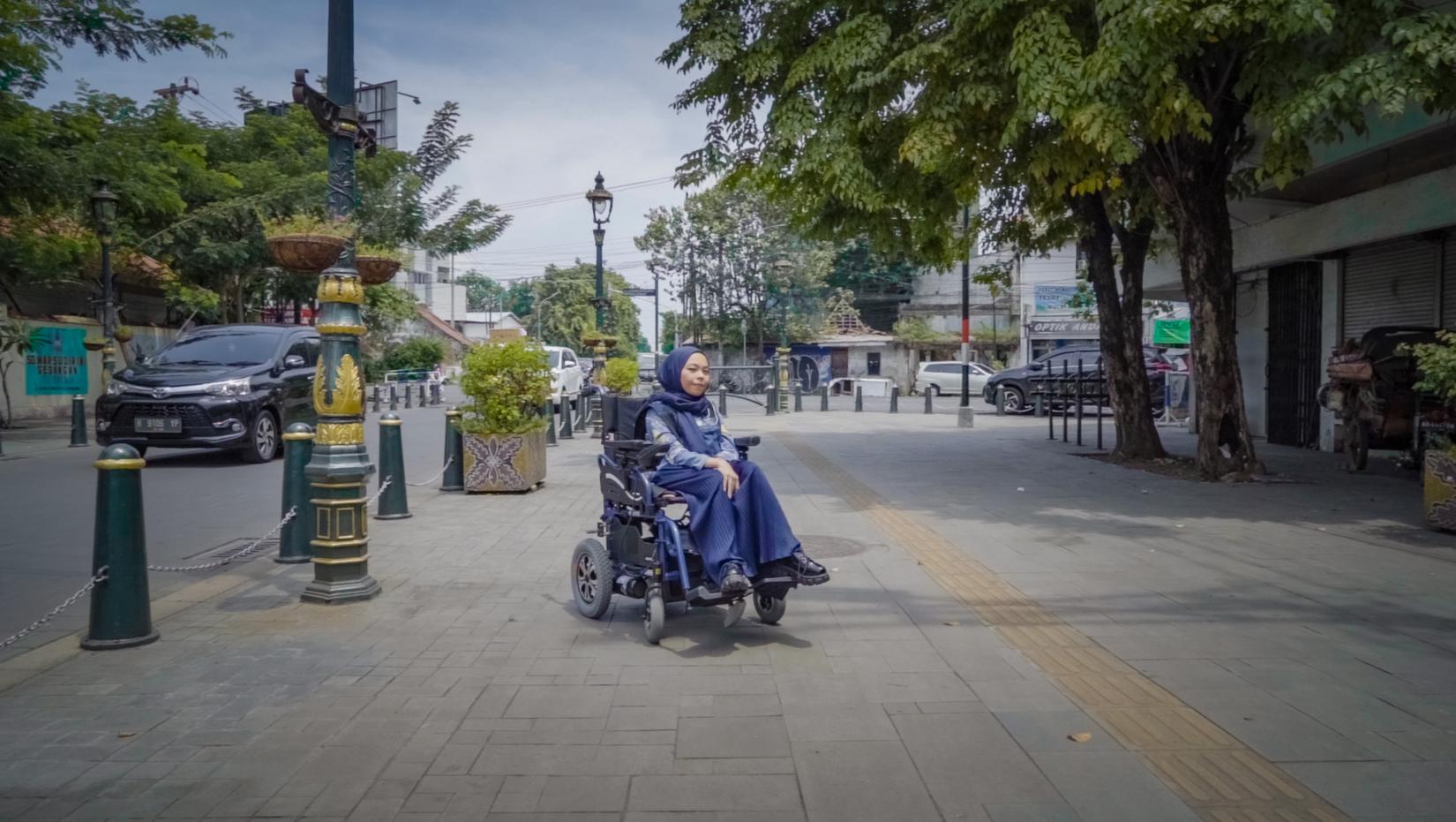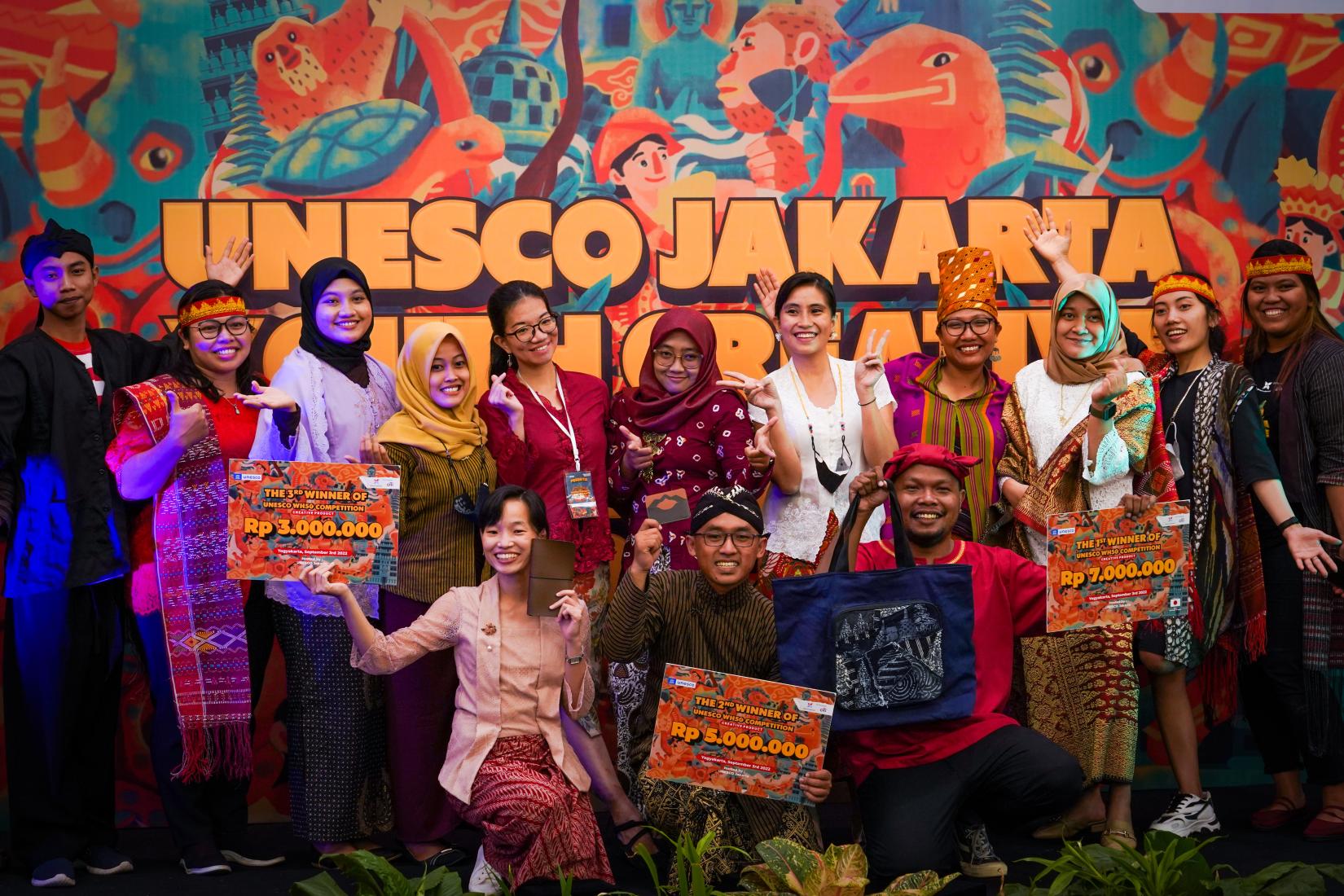Local Entrepreneurs Thrive While Helping to Preserve Indonesia’s Cultural Heritage

-----
As a child growing up in Yogyakarta, Dheni Nugroho was captivated by Borobudur, the world’s largest ancient Buddhist temple complex that crested the hilltops of neighboring Central Java Province. More fascinating even than the 2,674 Buddhist reliefs etched into the temple’s volcanic rock or the five-kilometer walkway inside the main building was the mystery of how it was built more than 12 centuries ago.
“The rocks, the stone, were carried from the river, through the forest,” Dheni explains, “It's very interesting—many people don't see the connection between the temple and the environment.”
It was that connection that inspired the design of a wallet Mr. Nugroho entered for a UNESCO competition to celebrate the 50th anniversary of the world heritage convention in 2022. Handsewn by artisans with disabilities at a local studio, his prize-winning wallet features three contrasting leather panels that depict the silhouette of the temple, the forest, and the skyline behind. A QR code embedded in the packaging links to information about the temple, and the wallet’s construction.
Mr. Nugroho is one of more than 1000 young creative entrepreneurs living around six Indonesian heritage sites that UNESCO Jakarta has supported through its Kita Muda Kreatif (Creative Youth at Indonesian Heritage Sites Program) in partnership with the Citi Foundation. The design competition he entered was part of an array of activities that included 130 online workshops in 2022, support to revitalize 500 youth-owned brands, and more than 15 offline exhibitions and eight online markets since the programme began in 2017. Supporting the livelihoods and aspirations of young creative entrepreneurs through workshops teaching marketing, branding, and accounting skills, a range of mentorship opportunities, and networking events not only contributes to keeping Indonesia’s cultural heritage intact, UNESCO says, but also ensures tourism based on those heritage sites has a positive impact on people living in the vicinity.
“Tourists from around the world flock to heritage sites like Borobudur temple, but nearby communities don’t always enjoy the socio-economic benefits generated by the massive flow of visitors” says UNESCO’s Indonesia representative Maki Katsuno-Hayashikawa. Helping young artisans and local business owners thrive, she adds, “is one of the best ways of ensuring those benefits are distributed more equitably.”
More than half of the entrepreneurs Kita Muda Kreatif has supported are women. Rizky Puput Isnaini, a visual artist based in Semarang, is one of 40 young creatives in the programme with a disability.

Ms. Isnaini’s muscular dystrophy, which causes her hand tremors, fatigue, and spinal pain, makes painting the vivid watercolors for which she is known painful. But since her disability forced her to leave school in the fifth grade, her art has been an important medium for expression. Kita Muda Kreatif’s support has given the wheelchair-user a broader platform to explore her creativity and helped her expand her client base, she says.
“I used to be concerned with representing images as realistically as possible,” says Ms. Isnaini, discussing a recent self-portrait called Woman with History, which shows flowers growing though cuts in a woman’s face. “But I can see that when I put more feeling into my drawings, I can put more of my soul into them.”
In March 2023, Ms. Isnaini joined a UNESCO panel on the advantages of and drawbacks of using AI to augment visual images. Last year, she teamed up with fashion designer Risa Maharani as part of a design challenge set by Kita Muda Kreatif, which culminated in a UNESCO-hosted fashion show in Semarang on World Disability Day.
It is these collaboration and networking opportunities that Semarang-based eco-fashion designer Jemi Nikolaus, who also participated in the World Disability Day fashion show, says make Kita Muda Kreatif so special. Hats and bags portraying Indonesia's diverse cultural landscape, produced at Mr. Nikolaus’ zero-waste studio in Semarang, won the same UNESCO World Heritage anniversary competition Mr. Nugroho entered with his Borobudur wallet.
Joining product design coaching sessions, workshops on sustainability, and collaborative mentoring offered by UNESCO and the Citi Foundation, helped Mr. Nikolaus adjust his business model, which led to higher sales and new customers, he says: “the collective mutual cooperation, sincere support and solidarity were stimulating.”

He is not alone. Since joining Kita Muda Kreatif, 94 young entrepreneurs said they had increased their income, with 140 developing new goods or services, and 61 hiring new staff to keep pace with growing business demands. Meanwhile, some 187 participants received technical assistance in obtaining legal business certifications, with more than 20 youth subsequently forging business partnerships with private sector companies.



